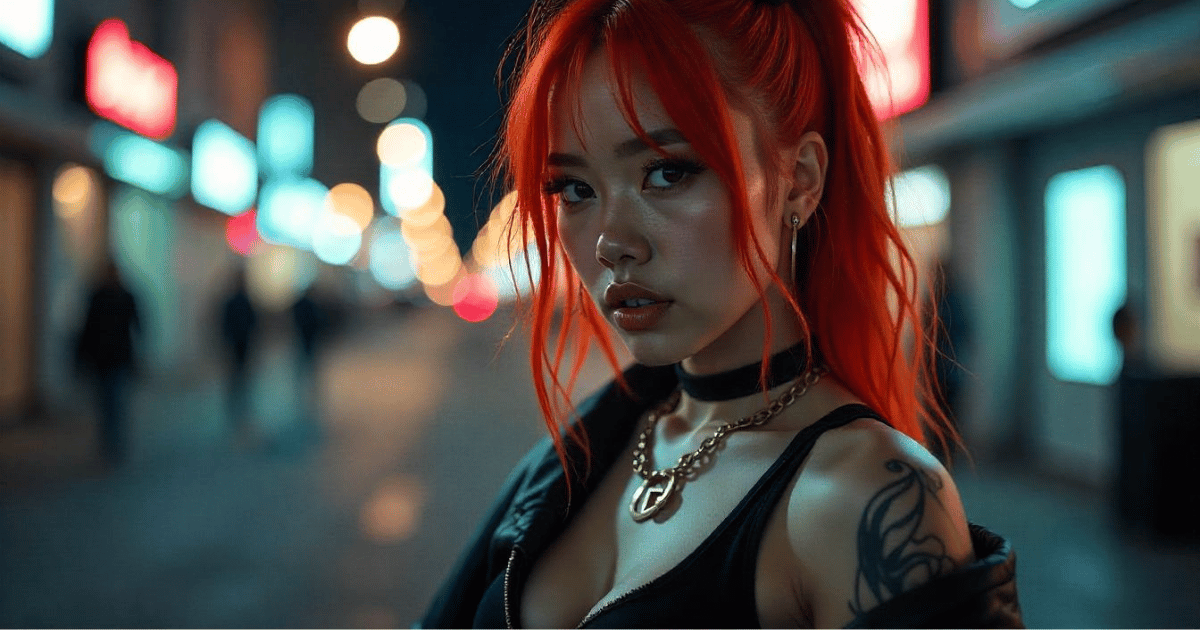The best rap hooks don’t ask for your attention – they grab it. A drill rapper growls a one-liner that launches a million TikToks. A pop-savvy MC flips a 30-year-old soul chorus into a new-gen anthem. An indie rebel tears up the formula, spitting three minutes straight with no chorus at all. In 2025, the hip-hop hook is a messy battleground of culture and creativity – a place where virality meets vulnerability, and where the hook itself often carries more weight than any verse.
Hip-hop’s modern choruses are shorter, louder, and more unpredictable than ever. They have to be: we’re living in the era of 15-second attention spans, where skipping a song is easier than listening thelineofbestfit.com. But behind those instantly hummable refrains are layered stories – of artists wrestling with tradition, algorithms shaping art, and the age-old tension between keeping it real and making it stick. This feature dives deep into how today’s rap and hip-hop hooks are created and why they resonate. It’s not a how-to guide; it’s a journey through studios and social feeds, through history and hype, to understand the choruses that have us all hooked berklee.edu.
Instant Hooks, Instant Hits: The 10-Second Race
TikTok’s billion-plus users have become a kingmaking audience that rewards immediate musical gratification. The catchiest part of a song – often the hook – now gets served up fast, sometimes even before the first verse, as artists scramble to capture attention in seconds thelineofbestfit.com. The data is sobering: nearly one in four listeners will skip a track within the first 5 seconds, over one-third by 30 seconds thelineofbestfit.com. For hip-hop creators, that means no slow build-ups, no indulgent intros. It’s “don’t bore us, get to the chorus” on a whole new level.
On TikTok, a 15-second snippet can rocket an unknown rap song into the stratosphere. Hooky songs like Lil Uzi Vert’s “Just Wanna Rock” blew up with over 500 million TikTok plays in three weeks rap-up.com – all off a frenetic two-line chant and a Jersey club beat. By the time Uzi officially dropped the track, fans already knew the hook by heart, from the viral dance challenges and looping memes. “I just wanna rock,” he repeats on the record’s entire two-minute runtime, letting an addictive beat and a few words do all the heavy lifting rap-up.com. The song barely has a verse; it doesn’t need one. In the TikTok era, a hypnotic 10-second loop can be more powerful than 16 bars of lyrics.
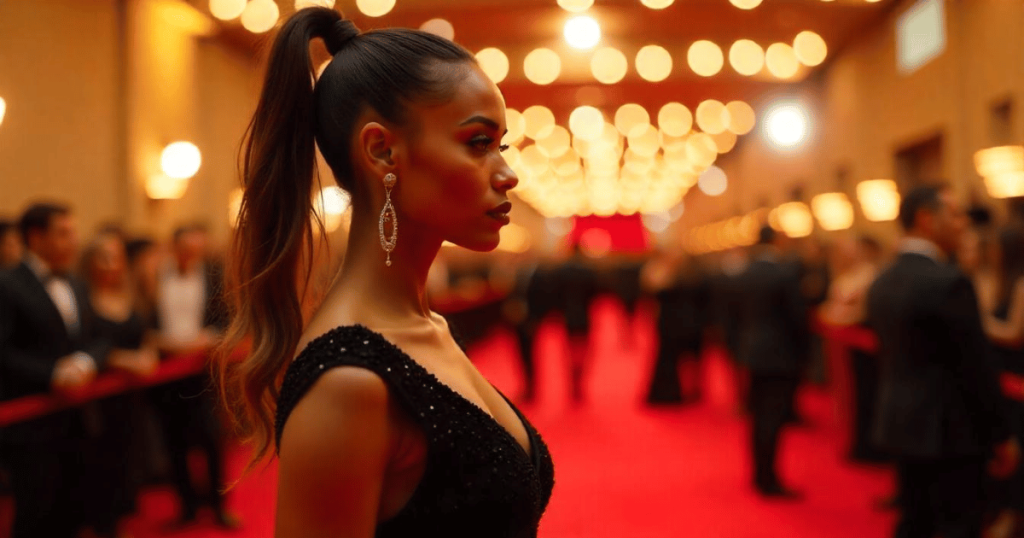
It’s not just newcomers chasing virality. Established stars are restructuring songs for the swipe-happy audience. Choruses arrive sooner and hit harder. Many hit tracks now start with the chorus or a teaser of it, hooking you before you even realize what’s happened berklee.edu. “You have to be very selective about what you introduce first,” notes songwriter Rodney Alejandro – it can’t be too complex; it has to be super catchy, really fast berklee.edu. The goal is to trigger that “oh, this is my jam” reflex in the listener before they even think about skipping. If that means revealing the hook upfront, so be it – though Alejandro cautions against giving away the whole game immediately berklee.edu. The trick is to tease just enough of the chorus to leave us curious (and primed to crave the full thing when it drops).
The result? Songs that shoot out of the gate. Think of Drake’s recent hits, where he often opens with a hook or hook-like phrase (“Twenty-one, can you do somethin’ for me?” on “Rich Flex”) to generate instant meme-able moments. Or consider how many tracks these days clock in at barely two minutes, essentially one long hook sandwich. It’s a high-stakes race for attention. Get in, hit ’em with an earworm, get out. In a world where the next track is one swipe away, the hook has become not just a musical device but a survival mechanism.
Yet there’s a flip side. As quickly as a TikTok hook can ignite a hit, it can also burn it out. When a single catchy line loops ad nauseam on every social feed, listeners might tire of the full song faster. The challenge for artists is making that viral hook carry a song that’s worth sticking around for. The best hooks today often have layers – a surface-level catchiness for the casual scroller, with deeper emotional or musical payoff for those who dive into the whole track. It’s a delicate balance between the immediate sugar rush of virality and the lasting buzz of a well-crafted song.
From Sugarhill to TikTok: A Chorus Evolution
Before hooks had to be TikTok-ready, they served a simpler role: get the crowd moving and singing along. Early hip-hop in the 1970s and ’80s often lifted hooks from disco and funk, or relied on party chants. The Sugarhill Gang’s 1979 “Rapper’s Delight” barely had a traditional chorus – it was a long groove with memorable nonsense (“hip, hop, the hippie, the hippie to the hip hip hop….) that functioned as a hook through sheer repetition and charisma. A few years later, Grandmaster Flash and the Furious Five’s “The Message” delivered one of the first great rap refrains: “Don’t push me ’cause I’m close to the edge.” It was simple, urgent, and unforgettable, distilling the song’s social commentary into a street-corner mantra that listeners could shout in unison.
By the late ’80s and early ’90s, the era of the hook singer was in full swing. Every rap banger had to have a syrupy R&B chorus to sweeten the hard verses – think Mary J. Blige belting on Method Man’s “I’ll Be There for You/You’re All I Need,” or Nate Dogg’s smoky baritone elevating Warren G’s “Regulate.” The formula was clear: gritty raps, smooth hooks. It broadened hip-hop’s appeal without sacrificing its soul, and it set the template for chart domination. Artists like Tupac expertly fused rap and sung hooks themselves (“How Do U Want It”), while groups like Public Enemy took a different route – their “hooks” might be a DJ scratching a phrase or a posse yelling a slogan (“Fight the Power!”), emphasizing rhythm and attitude over melody.
Then came the 2000s, and with it a new generation that blurred the lines. Melodic rap became the norm. A singular figure in this shift was 50 Cent, who learned under Jam Master Jay how to write a killer chorus from scratch. “He’d make me write the chorus to the record three or four times before I started [the verse],” 50 recalls of his early mentor medium.com. That drill instilled in him a hook-writing muscle so strong it gave us indelible earworms like “In da Club” (“Go shawty, it’s your birthday”). 50 even got comfortable stacking multiple melodies in one track – in “P.I.M.P.” he flips the tune mid-hook (“I don’t know what you heard about me…” shifts to “…you can’t get a dollar out of me”), keeping listeners on their toes medium.com medium.com. The hooks were hypnotic and unshakeable. As one commentator put it, young 50 learned how to turn “a mere barrage of vocals” into something with legs – a hook that could carry a song to radio and beyond medium.com. Producers looking for inspiration can browse our extensive collection of Rap Beats that set the foundation for these classics.
At the same time, Kanye West was deploying pitched-up soul samples in the early 2000s, effectively letting Chaka Khan or Ray Charles sing the hooks for him via sample (who could resist the chipmunked gospel of “Through the Wire”?). T-Pain then ushered in the Auto-Tune era mid-2000s, where the hook became a playground of computerized melody. T-Pain’s choruses on hits like “Buy U a Drank” were so catchy and so distinct with that robotic sheen that an entire generation of artists (from Lil Wayne to Kanye to future superstars like Travis Scott) took notes. A hook featuring T-Pain practically guaranteed a hit because his sound was one-of-a-kind and instantly recognizable revolt.tv. As REVOLT wrote, “a hook featuring the Tallahassee legend meant instant success” in those years revolt.tv. For those who love the raw edge of trap, explore our collection of Trap Beats to capture that signature sound.
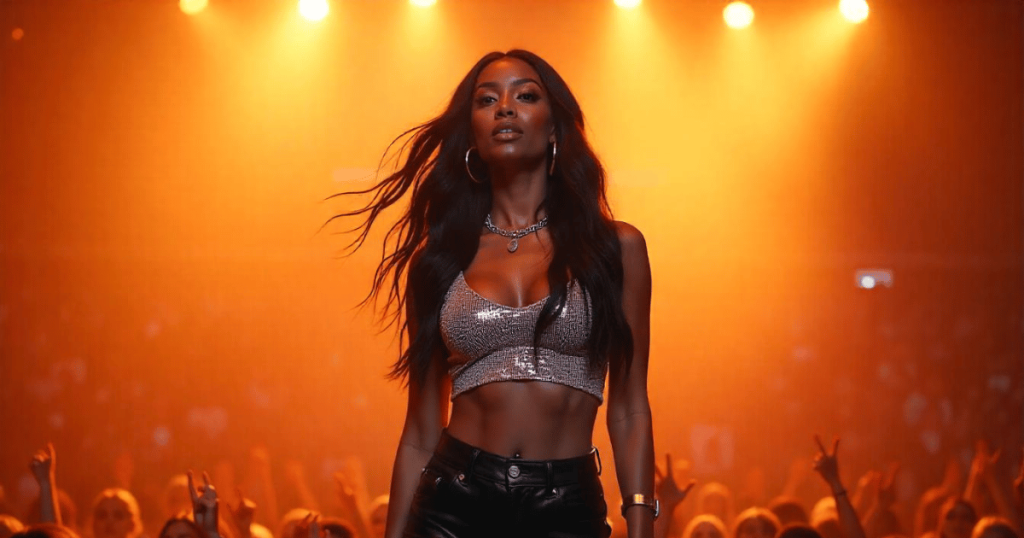
Fast-forward to the 2010s: hip-hop became pop music, and hooks were the secret weapon. Drake, perhaps the defining artist of the era, turned hooks into art form. He could croon, rap, or do both in one chorus, and the consistency of his hit-making led one observer to note that Drake had “perfected the art of creating choruses” across genres revolt.tv. One minute it’s the sing-song meme of “Hotline Bling,” the next it’s the New Orleans bounce chant of “Nice For What” – different flavors, same knockout impact revolt.tv. Drake’s hook diversity set a benchmark: to top charts, a rapper had to deliver choruses as compelling as their verses (if not more). His influence can be heard on countless others – when even hardcore rappers like Meek Mill scored their biggest hit (“Going Bad”) by trading bars with Drake, it underscored how the hook-centric approach ruled the airwaves.
And yet, even as the formula solidified, some were tearing it up. The late 2010s saw the rise of SoundCloud rap and experimental acts that sometimes ditched choruses altogether. Earl Sweatshirt would spit dense one-verse tracks with no refrain, and fans loved the raw intimacy. Griselda Records’ crew (Westside Gunn, Conway, Benny) brought back the grimy 90s vibe with songs that often had minimal hooks or just loops – a deliberate anti-pop stance. As one self-described “old head” fan noted, a lot of golden-age hip-hop was too formulaic, always three verses and hooks in between, and it’s refreshing that today’s rappers don’t feel boxed in by that reddit.com. For an unfiltered vibe, check out our Freestyle Rap Beats that capture the essence of spontaneous creativity. He celebrated the fact that many newer tracks are a tight 2–3 minutes with only two strong verses or even just one long verse, rather than stretched to fill a template with a weak chorus reddit.com. The message: if you don’t want a hook, don’t force one. Hip-hop is flexible enough to allow hookless bangers and still be compelling.
So here we are in the 2020s, where the hook has simultaneously never been more important and more optional. It’s a paradox: some of the biggest hits are basically all hook, and some critically acclaimed rap songs have no traditional hook at all. To understand why, we have to look at how artists today are responding to the twin pressures of the culture and the algorithm.
Breaking the Formula: When No Hook Is the Hook
Not every viral rap song is built on a sugary chorus. In fact, a surprising trend in recent years has been the success of unconventional song structures – songs that defy the verse-chorus-verse blueprint yet still captivate millions. Nowhere was this more dramatic than with Travis Scott’s blockbuster “SICKO MODE.” newsroom.spotify.com Travis Scott blew up the rulebook with “SICKO MODE,” a three-part epic with no traditional chorus and multiple beat switches – essentially three songs stitched into one newsroom.spotify.com. By all conventional wisdom, a song with “no chorus and two mood-changing beat switches” shouldn’t dominate the charts newsroom.spotify.com. But “SICKO MODE” did exactly that, becoming an omnipresent #1 hit and an anthem of 2018 newsroom.spotify.com. Its structure was its secret weapon: each section delivered a new mini-hook. First, Drake’s cameo gave us the Instagram-caption favorite “Like a light (ayy),” repeated twice for emphasis, effectively serving as a hook before vanishing with the beat change. Then Travis rode a hypnotic neck-snapping beat (as Spotify’s editors called it newsroom.spotify.com) with a more straightforward flow than his usual auto-tuned melody, making lines like “Who put this s**t together? I’m the glue” feel like rallying cries. By the time the third section rolled in, listeners had experienced multiple highs – no one big chorus, but several addictive moments. “SICKO MODE” became a sensation despite (or because of) its lack of structure newsroom.spotify.com, proving that breaking the mold could itself be a path to glory. It even popularized beat switches in mainstream rap newsroom.spotify.com; suddenly, songs that shapeshifted mid-way (once a rarity) were welcomed by audiences who’d been trained by Travis and Drake to expect the unexpected.
Travis isn’t alone. His protege Don Toliver often blurs the line between hook and verse, sliding in and out of melodic refrains without clear delineation. Kendrick Lamar and Baby Keem’s frenetic track “family ties” flips tempos and energy with barely a repeating chorus – instead, we get a wild “Jump in that— / hup, hup” break from Keem that functions as a hook through sheer energy and repetition. It’s chaotic, it’s weirdly catchy, and it underscores a key point: a rap “hook” doesn’t have to be a sing-along melody. It can be a rhythmic chant, a sound effect, an ad-lib, or just a moment that’s so memorable you’re compelled to repeat it.
In the underground and alternative scene, the no-hook approach is even more common. A track like JPEGMAFIA’s “Thug Tears” might ride on stream-of-consciousness bars and a recurring sample as its anchor instead of a chorus. Griselda’s gritty street raps sometimes replace the hook with a scratched-in audio clip from a crime film, or simply a single phrase looped (Westside Gunn’s signature “BOOM BOOM BOOM” ad-lib at the end of a verse hits like a hook – the crowd knows it and yells it back every time). These choices challenge the notion that a “proper song” needs a chorus. As one Reddit hip-hop head pointed out, plenty of classic tracks from back in the day had no obvious hooks too – it’s just that we forget them amidst the radio singles reddit.com. The difference now is that audiences are more accepting of variety. Listeners who get bored by formulaic structures can find solace in these experimental forms. And with streaming, an unconventional track can still go viral if it strikes a chord (or lands on the right playlist).
Take the late Pop Smoke’s drill anthems: many had hooks that were basically one aggressive phrase repeated (“Welcome to the Party” or the gravelly “Dior, Dior” refrain). They’re hooks by function – something to chant – but they’re as raw and minimal as it gets. On the flip side, an artist like Lil Yachty scored a cult hit with “Poland” by doing the opposite of a polished chorus: he warbled off-key “I took the Wooooock to Poland” in such a strangely catchy way that the roughness became the charm. That one loopy line was the song; it meme’d its way across the internet and gave Yachty his biggest buzz in years, all from a track that sounds like a half-finished joke (which, in a way, it was).
The success of these oddball hooks exposes a contradiction: in an age where everyone is chasing the perfect formula for virality, sometimes breaking the formula is what goes viral. There’s an appetite for the unpredictable. Chris Richards, the ever-unpredictable critic, often highlights how popular music’s most thrilling moments come when an artist takes a left turn. Today’s hip-hop hooks are full of left turns – from Cardi B’s decision to forego any melodic hook on “WAP” and instead let raw attitude carry the refrain (“There’s some hoes in this house” sampled in the background, acting as the chorus), to Tyler, The Creator intentionally burying sweet pop choruses under layers of distortion on IGOR. These choices might confuse a major-label marketing exec, but they delight fans who crave something novel.
Still, even the most structure-breaking songs tend to have a center of gravity – a moment we all remember. Call it the hook, the refrain, the catchphrase. It might not look like a traditional chorus, but it serves that purpose. In a chaotic musical landscape, we latch onto any repeated element as the hook. That’s why Baby Keem yelling “Top of the mornin’!” on a Kendrick track became a viral catchphrase – it was a bizarre ad-lib repeated enough times to stick in your brain, effectively a hook by repetition. In hip-hop, rebellion and catchiness aren’t mutually exclusive; sometimes the most rebellious song on the album has the most oddly addictive hook of all.
Emotion vs. Algorithm: Heartstrings in the Hook
The modern hook lives at the intersection of cold strategy and deep soul. On one hand, artists know they need that ear-catching moment to satisfy the algorithms – the viral line, the Spotify-friendly intro, the TikTok dance prompt. On the other hand, the truly great hooks carry emotional weight that an algorithm could never predict. There’s a constant tension: make it formulaic enough to go viral, but genuine enough to matter. As listeners, we can feel when a chorus is cynically crafted versus when it’s coming from a real place. The best hooks today often manage to be both calculated and cathartic.
Consider the case of Paul Russell, a newcomer who blew up when a snippet of his song “Lil Boo Thang” took off on TikTok. Russell had unknowingly written a “TikTok hook” – a bouncy flip of a 1970s soul sample with a countdown-style chorus that just resonated with the platform berklee.edu berklee.edu. But he didn’t set out to appease the algorithm. In fact, he was initially skeptical about writing music for TikTok. “I hate it when people make songs for TikTok that they’re gonna release,” he admitted songwritingmagazine.co.uk. His approach was to make music he loved, then share playful clips separately. Ironically, one of those playful clips (the hooky part of “Lil Boo Thang”) went viral and forced his hand – the demand was so high, he officially released the song, and it became a platinum hit songwritingmagazine.co.uk. Russell’s reflection on this is telling: “It doesn’t have to be that people are either making music for an algorithm and it sucks, or they’re making super artistic stuff. It can start as an algorithmic thing and then turn into something real and authentic.” songwritingmagazine.co.uk. Fine‑tune your track’s tempo using our Free Online BPM Analyzer and discover the perfect key with our Song Key BPM Finder. In his case, a fun, goofy hook born on social media turned into a genuine expression of joy that millions connected with. The authenticity came after the virality, proving they’re not mutually exclusive. songwritingmagazine.co.ukThat emotional authenticity is ultimately what gives a hook staying power. “What a song should be, first and foremost, is a vehicle to communicate some sort of emotion to people. If you accomplish that goal, then the rest… is just details,” Russell says songwritingmagazine.co.uk. It’s a beautifully simple guiding principle: if the hook makes you feel something – euphoria, sadness, empowerment, nostalgia – then whether it’s 8 bars or just 2 words on loop, it’s doing its job.
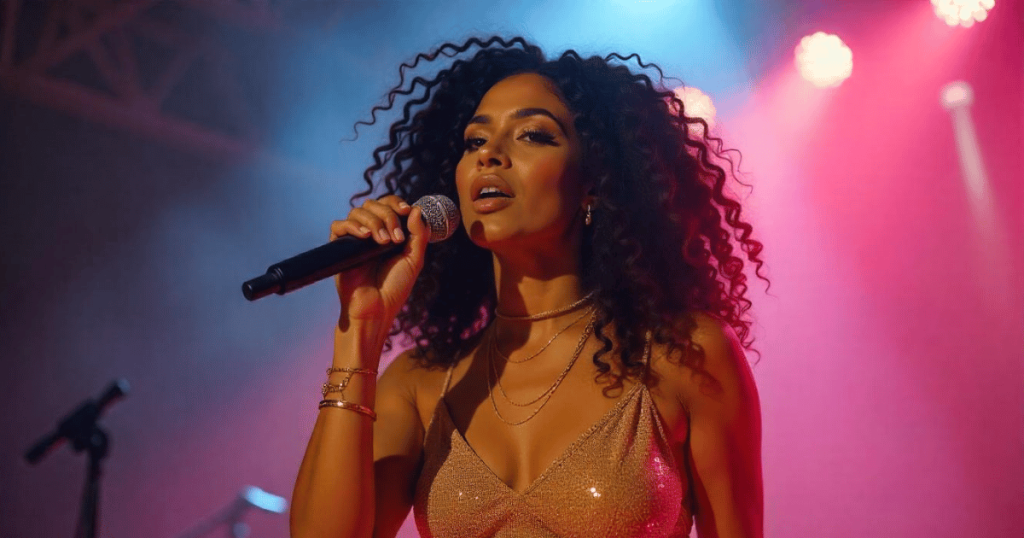
Look at Lil Durk’s 2023 hit “All My Life” featuring J. Cole. On paper, it’s a streaming-era move: Durk, a Chicago drill veteran, reaching for a broader audience by adding a soulful, kids-sung chorus that’s tailor-made for crossover appeal. The hook is a glossy, uplifting singalong (“All my life, they’re tryin’ to keep me down” repeats with gospel fervor). It absolutely helped the song blow up on YouTube and radio – kids singing on a chorus is like catnip for virality and poignancy (just ask whoever first put a children’s choir on a hook; it rarely fails). But beyond the strategy, that hook carries real emotional resonance. It’s Durk, a man known for gritty street tales, suddenly offering hope and resilience, almost as a plea. The contrast hits hard. Enhance your sound further with our MP3 Enhancer, and for those looking to refine every element, try our Audio Stem Splitter Free Download tool. You can cynically say, “Well of course it went viral on TikTok, it’s a catchy chorus with cute kids,” and you’d be right – snippets of the song flooded social media, often set to inspirational videos. But the reason it connected is because it felt earned. In the context of Durk’s story (rising above violence and loss), that chorus becomes a victory anthem that can give you chills. The emotion under the hook shines through the commercial packaging.
Emotional hooks don’t have to be positive either. Raw pain can be a hook. When the late Juice WRLD crooned “I still see your shadows in my room” on “Lucid Dreams,” that line became the defining singalong of the song – a gut-punch of heartbreak wrapped in a hypnotic melody. TikTok later saw waves of emo-rap hooks (from Trippie Redd’s wails to XXXTentacion’s blunt pleas) go viral because young listeners felt those feelings deeply and shared them widely. In these cases, the hook is basically group therapy. It’s the line everyone screams at concerts with tears in their eyes.
On the flip side, some hooks tap into collective swagger and attitude. The summer of 2020 gave us Megan Thee Stallion’s “Savage,” with its now-iconic hook: “I’m a savage, classy, bougie, ratchet.” It’s cheeky, it’s brash, and when Beyoncé jumped on the remix, adding her own twist (and Instagram-ready lines like “if you don’t jump to put jeans on, you don’t feel my pain”), it turned into a cultural phenomenon. That hook became a TikTok dance challenge (#SavageChallenge) that everyone from teens to grandmas attempted, true – but it also became an empowerment mantra for women owning their multifaceted selves. The emotional resonance here was confidence and solidarity. Megan’s hook gave people a fun way to flaunt their attitude, and the emotion of “feeling oneself” is very much real. Once again, the hook hit both marks: it scored massive virality (millions of TikTok videos, a chart-topping remix) and it meant something to the audience (a celebration of unapologetic femininity).
What about contradictions? Hip-hop often lives in the space between keeping it real and chasing success. Hooks epitomize that struggle. An underground rapper might worry that a catchy chorus = selling out. A pop-leaning rapper might fear that without a hook, their song won’t sell. There’s a constant question: Who are you making this music for – yourself, your core fans, or the masses? Hooks can be where that battle plays out. Some artists respond by deliberately dialing back the sugar to prove a point. When Kendrick Lamar released “HUMBLE.” in 2017, the hook was just him barking “Sit down, be humble” repeatedly over a sparse piano-driven beat – aggressively minimal and a far cry from a traditional melody. It was almost confrontational in its simplicity, which fit the song’s message. And guess what? It became a huge hit anyway. Kendrick proved he could make a crowd-chant hook that was raw and un-pretty, and it would still top the charts, because authenticity resonates.
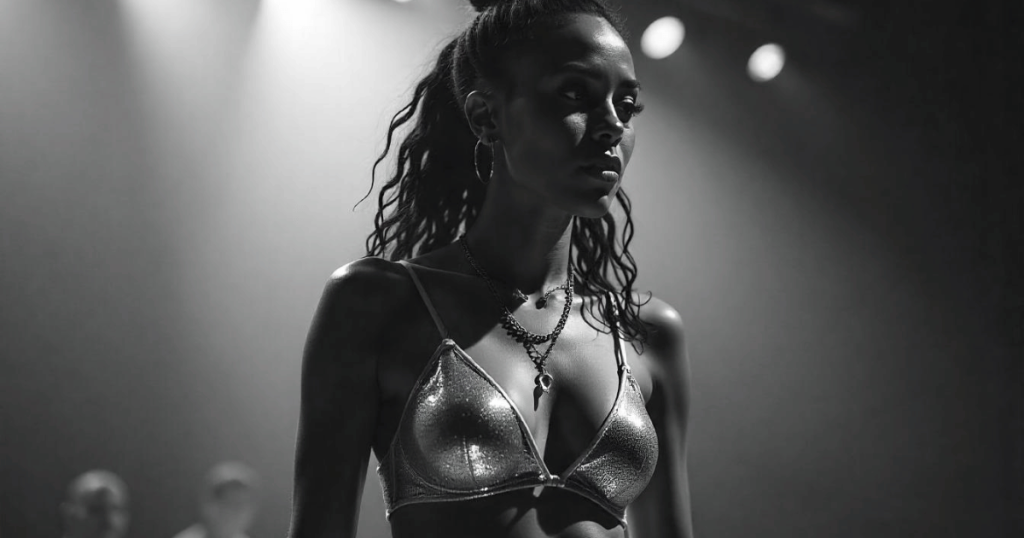
On the other hand, an artist like Doja Cat has openly played with the tension of hookiness. In 2023, she dropped “Paint The Town Red,” a song that both is and isn’t a pop-rap singalong. It samples a classic Dionne Warwick chorus (“Walk On By”) but flips the meaning, as Doja confidently raps, “B**h, I said what I said”*. It’s catchy as hell – partly thanks to the nostalgic sample – and gave her the first rap #1 on Billboard in years. But at the same time, she’s been trolling her pop-star image, flirting with more abrasive sounds and pushing back on fans who only want the bubblegum. Paint The Town Red’s hook achieved a balance: familiar enough to hum, edgy enough to still feel like Doja was doing it on her own terms. She challenged assumptions (who says a rap song with a dusty old sample hook can’t dominate 2024?) and managed to have her hit without feeling like she sacrificed her artistic quirks.
Ultimately, the spirit of modern hip-hop is to embrace these contradictions rather than resolve them. A great hook today might be a TikTok gimmick and an artistic statement simultaneously. It might chase virality and push back against the mainstream. The genre has always been about keeping it real, and in 2025, “real” can mean real emotional, real clever, real cynical, or real anything – as long as it connects. Every hook is a gamble: will it feel alive or will it feel manufactured? The ones that truly soar tend to feel alive, even if they were born in a boardroom brainstorming session or an algorithmic analysis. Because once a hook is out in the world, it’s the people who decide what to do with it – ignore it, meme it, sing it en masse, tattoo it on their bodies, whatever. Hip-hop’s best hooks today invite the people to do something with them, to participate. And that brings us to some examples of how these dynamics play out in specific songs.
The Hook Anatomy: Case Studies of Recent Earworms
Let’s break down a few standout hip-hop hooks from recent years, examining what makes them tick and how they exemplify (or defy) the trends. From melody and repetition to production and cultural impact, these hooks all took different paths to our playlists – but each left a mark.
| Song (Year) | Hook & Lyrics | Production & Arrangement | Platform Reach | Cultural Impact |
|---|---|---|---|---|
| “All My Life” – Lil Durk ft. J. Cole (2023) | Uplifting sung chorus by a children’s choir: “All my life, they’re tryin’ to keep me down” repeats. Melodic, anthemic, and easy to remember; Durk adds a heartfelt line echoing the theme. | Warm, piano-driven beat in a major key. Heavy drums drop under the chorus for impact. The choir vocals create a gospel vibe, offering a stark contrast to Durk’s gritty verses. Song structure centers on this chorus – it opens the track and closes it. | Massive on YouTube and radio; debuted in top 2 of Billboard Hot 100. TikTok flooded with inspirational clips using the chorus. High streaming numbers, strong cross-genre playlisting (hip-hop & pop). | Marked a positive turn for a drill artist – a street rapper making a hopeful anthem. Became an inspirational meme (kids singing it at school graduations, etc.). Showed that audiences embrace optimism from unlikely voices. Gave Durk a mainstream breakout without alienating his core. |
| “Just Wanna Rock” – Lil Uzi Vert (2022) | Minimalist chant hook: “I just wanna rock” repeated in a monotone, plus a wordless vocal rhythm (“da da da”). Virtually no complex lyrics – the phrase and beat carry it. | Fast-tempo Jersey club beat ( infectious drum kicks and bed-squeak sample). Only ~2 minutes long with one brief verse; essentially hook looped over dynamic beat breaks. No traditional chorus-verse structure; it’s one long party drop. | Exploded on TikTok – over 500k video creations in weeks rap-up.com. Peaked high on charts despite short length. Became a staple at clubs, sports arenas, and even a Fortnite emote hot97.com, extending its reach. | Heralded a trend of “post-lyrical” club bangers in hip-hop. Its success without a real verse challenged the primacy of bars. The hook’s dance spawned a viral challenge and unified listeners in pure vibe mode. Cemented the Jersey club sound’s influence in mainstream rap. |
| “Munch (Feelin’ U)” – Ice Spice (2022) | Catchy slang-driven hook: “You thought I was feelin’ you? That n**a a munch.”* Delivered in Ice Spice’s deadpan, slightly coy tone. It’s a one-liner hook – essentially a punchline turned chorus – repeated and immediately memorable. | Brooklyn drill beat with a playful twist (light, airy instrumental loop under the heavy drums). The track is short and straight-to-the-point; the hook kicks off the song and appears after the lone verse. Minimal layering keeps focus on that one hook line. | Started as a viral snippet on Twitter/TikTok (popular sound for memes). Gained organic traction before any radio play. Though modest on traditional charts initially, it amassed tens of millions of streams, and Drake’s early cosign boosted its visibility. | Introduced “munch” into the cultural lexicon (slang for a simp/performative pleaser) – the hook became a catchphrase, especially among young women flipping its meaning humorously. Announced Ice Spice as a breakout star; her unapologetic tone and simplicity signaled a shift in female rap, embracing raw internet humor as hooks. |
| “Savage (Remix)” – Megan Thee Stallion ft. Beyoncé (2020) | Confident call-and-response hook: Megan asserts “I’m a savage” and describes it (“classy, bougie, ratchet”), with a rhythm that invites singing along. Beyoncé’s remix layers add-ons (“OK!” and a sung “I’m a boss” line), amplifying the hook. It’s repetitive in the best way—easy to yell out with attitude. | Trap beat with a bouncy snare pattern. Uses stop-and-start arrangement – beat often drops out to accent the hook words (making them hit harder). The remix adds harmonies and a vocodered Bey chant, enriching the sonic texture without losing the hook’s simplicity. | One of TikTok’s biggest dance challenges (#SavageChallenge) in early 2020, propelling the song to #1 after the remix. Heavy radio rotation once Beyoncé joined. Went multi-platinum; the hook’s lyrics became common captions and hashtags (#ClassyBougieRatchet). | Empowerment anthem of the pandemic era – embraced especially by women celebrating multifaceted identity (glam and ratchet all at once). The hook’s lines became part of everyday slang. Also symbolized Houston pride (Megan and Bey linking up). Won Grammy for Best Rap Song, cementing its cultural status. |
| “fukumean” – Gunna (2023) | Provocative repeated question hook: “(Uh) Okay, fk you mean? Fk you mean?” slurred in Gunna’s melodic flow. It’s just a blunt phrase, but his delivery (sliding between notes) makes it melodic. The hook is basically the song’s title looped, punctuated by an ad-libbed “prrt” sound. | Moody Atlanta trap production by Wheezy – ominous piano loop over booming 808s. The beat strategically drops out for a second when Gunna says “f**k you mean?”, adding punch. No chorus section distinctly; the hook repeats at the start and end of the lone long verse, blurring chorus/verse lines. | Strong streaming performer – became Gunna’s highest-charting solo song (top 5 on Hot 100). Dominated on rap playlists and trended on TikTok (people using “f**k you mean?” in skits/memes). Minimal traditional promo due to Gunna’s controversies, yet fans pushed it to popularity. | A street anthem turned crossover hit, notable for thriving despite industry pushback (post-legal issues). The hook’s phrase entered casual lingo (“f**k u mean” = dismissive slang). Showed that a catchy street hook can supersede PR issues. Its success also underscored the public’s appetite for unapologetic, uncensored hooks in an era of radio edits – the rawer, the more authentic it felt. |
As this table shows, there’s no one way to write a great hook – but there are common threads. Repetition is key: whether it’s a melody or a phrase, a hook usually gives us something we can’t help but repeat. Simplicity often wins: not that the hook is dumbed down, but it’s distilled to an essence (a feeling, a motto, a vibe) that cuts through on first listen. Production can elevate a hook (the children’s choir in “All My Life,” the beat drop in “fukumean”) by making that moment stand out sonically. And crucially, the cultural context – how listeners adopt the hook – can transform a mere song into a movement (as with “Savage” or “Munch”).
The Beat and Beyond: How Producers Mold Hooks
Behind many iconic hooks is a producer or songwriter quietly pulling strings. Sometimes the beat itself carries the hook – think of the shrill flute from Future’s “Mask Off” or the triumphant horn riff from Lil Nas X’s “Industry Baby.” These instrumental motifs are earworms without lyrics, giving rappers a head start. Producers today often craft beats with a built-in hook element, knowing that a hot melody loop can do half the work. Metro Boomin, for example, might bring in a soulful sample that repeats (like he did on Kodak Black’s “Tunnel Vision”) so that the listener latches onto that as the refrain. In drill music, oftentimes it’s a haunting vocal sample or a specific bass slide that becomes the hook by sheer dominance in the track.
But producers also help rappers shape vocal hooks. There’s a story of 50 Cent where Jam Master Jay wouldn’t let him start writing verses until he had tried multiple choruses – literally making him write the hook three or four different ways, to pick the strongest one medium.com. That kind of mentorship is invaluable. Similarly, in writing camps for big albums, you’ll find producers and writers humming gibberish over beats to find catchy toplines, then fitting words to them. A lot of rap hooks come from this melodic hunting process. Artists like Travis Scott famously use Auto-Tune not just as an effect but as a composition tool – freestyle humming melodies to discover a hook, then refining the syllables. You can hear this on tracks like “HIGHEST IN THE ROOM” where the melody undoubtedly came first and the words (simple as they are: “highest in the room”) just followed the tune.
Production techniques like stop-time (cutting the beat for a moment) can make a hook pop out. We mentioned how Gunna’s beat pauses on “fukumean” – that’s producer wizardry to ensure you feel that phrase. Likewise, in many club tracks, producers will strip away drums when the hook vocals come in, creating contrast, then slam the beat back to double the impact (David Guetta’s approach in pop, now common in hip-hop too).
Another factor: sometimes the sound of the voice is the hook. Take someone like Future or Young Thug – their vocal inflections and ad-libs are hooks in themselves. Producers often design beats with space for those ad-libs (like the now-classic “Yahhh!” or “Skrrt!” that pepper Migos and Thug tracks). Migos’ late member Takeoff once said in an interview that they’d treat ad-libs almost like background singers in a song, adding rhythm and catchiness behind the main vocals. Those repeated ad-libs (“Mama!”, “Dat way!”, etc.) become part of what listeners shout along with – effectively mini-hooks surrounding the main hook.
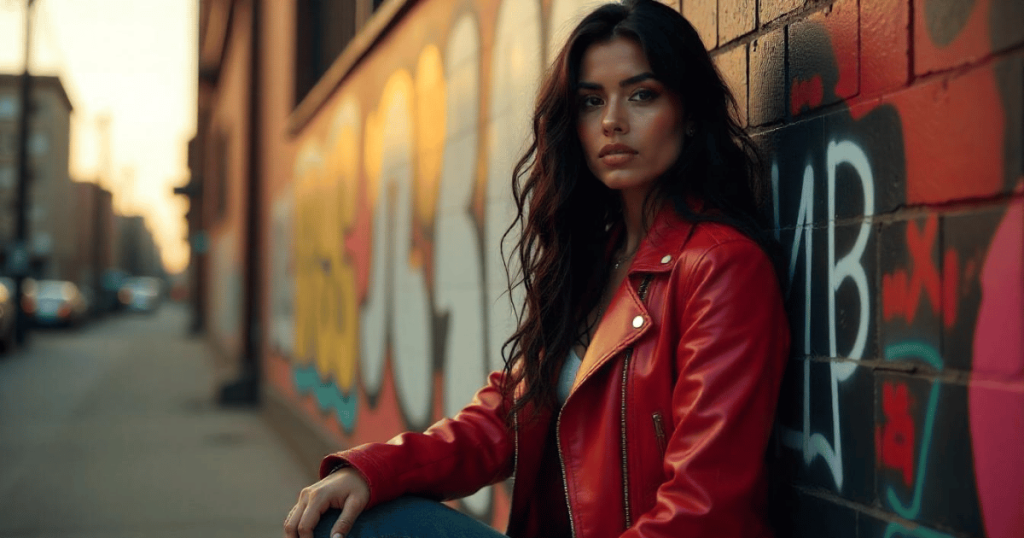
Interestingly, naming a beat can inspire a hook too. Some producers send out beats with evocative titles which the artist then flips into a concept. In one interview, an indie rapper named Petey mentioned a beat titled “Eternity” led him to freestyle the hook about making music for an eternity ismymusicfire.wordpress.com. It shows that hooks can sprout from any seed – a word, a feeling, a random prompt – and a savvy producer knows how to plant those seeds.
In the studio, writing a great hook is often a process of reduction. Rappers might freestyle a bunch of lines, and then everyone listens back to identify the one phrase that sticks. That phrase gets pulled out, repeated, polished – voila, a hook. Eminem’s team, for instance, might zero in on an emotional line in his verse and suggest making it the chorus (think of “Love the Way You Lie” – the core hook is sung by Rihanna, but Em’s closing line of each verse ties back to it, making it feel like he wrote around that hook concept).
Producers also understand the power of key and tempo. A hook in a major key can feel more celebratory (like the sing-song “Trap Queen” chorus by Fetty Wap), whereas a minor key hook feels moodier (Roddy Ricch’s “The Box” – that “eee err” squeaky hook over a minor melody felt ominous and catchy). Tempo-wise, mid-tempo tracks (90-100 BPM) often give hooks room to breathe and swing – a lot of club/radio hits live here – while super fast or slow tempos can make a hook stand out simply because they’re unusual in the rap context.
And let’s not forget silence as a tool. Sometimes the absence of music around a hook can create a memorable moment. In Travis Scott’s “Goosebumps,” the beat stutters off when he says “I get those goosebumps every time,” isolating that line – you feel it, then the beat drops back for “713…” part. It’s a micro second of silence amplifying the hook.
So, while from the outside a catchy chorus might seem like pure artist magic, there’s a lot of invisible work and deliberate technique often guiding it. Producers in 2024 are as much hook doctors as beat-makers, fine-tuning tracks so that the peak moments peak a little harder. It’s a collaborative dance between beat and voice, and when it clicks, you get those spine-tingling few seconds that you’ll be humming for weeks.
The Hook Is the Heart
At the end of the day, whether a hook is a soulful melody, a goofy meme, a fierce battle cry, or a single repeated word, it carries the heart of the song. Modern hip-hop has proven that there’s infinite ways to deliver that heart. The common thread is that the hook is the point of connection – between artist and audience, between a song and the culture. It’s the olive branch to the listener saying, “Come in, this is what we’re about here.”
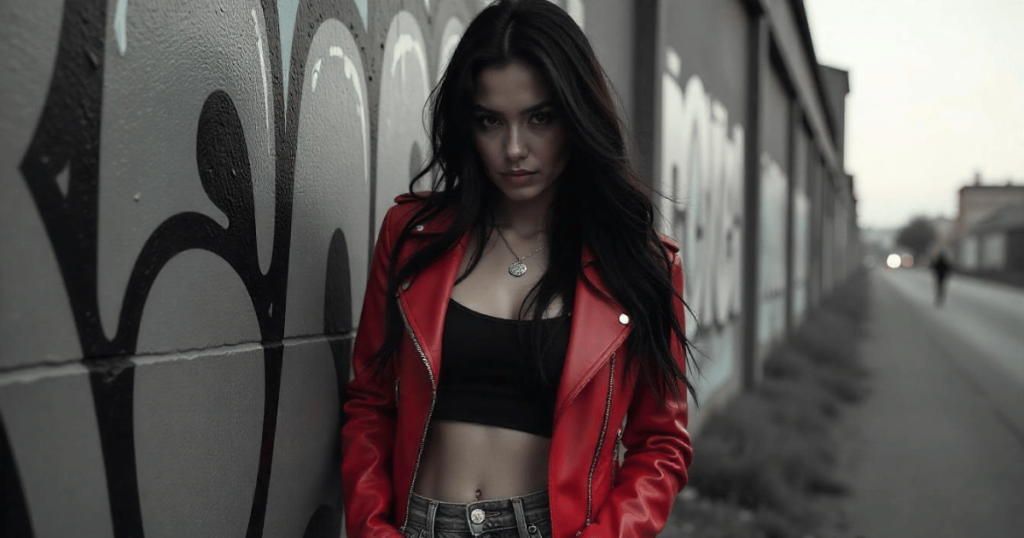
Today’s best rap hooks challenge our assumptions. We might assume a TikTok hit has to be shallow, then an artist like Paul Russell uses a TikTok moment to create something heartfelt and lasting. We might assume a great rapper shouldn’t rely on simple hooks, then Kendrick gives us an undeniable chant like “We gon’ be alright” that becomes a protest anthem. We might think emotional vulnerability and commercial viability are at odds, then Juice WRLD or Lil Peep come along with hooks that are as raw as they are viral. Hip-hop’s evolution has always been about expanding definitions – of lyricism, of production, and now of what a hook can be.
In 2024 and 2025, we’re seeing hooks drive genre-blending too. Rappers are collaborating with Afrobeat and Latin artists, trading hooks that transcend language (see Bad Bunny and Cardi B exchanging Spanish/English choruses) – the hook becomes a zone of unity. Meanwhile, the influence of drill, trap, R&B, and even punk is converging in the hooks of experimental artists. One moment you have a hyper-pop inspired glitchy hook (à la Rico Nasty or 100 gecs collabs), the next a country-rap refrain (the ghost of “Old Town Road” still looming large). The boundaries are gone. What remains is the pursuit of that feeling.
Writing the “best” rap hook today isn’t a paint-by-numbers exercise; it’s more like capturing lightning in a bottle. It might come from a careful recipe or pure accident. It could be labored over by a team of writers or freestyled in a burst of inspiration. As listeners, we rarely care about the process once that hook hits our ears. We care that it hits our soul. We care that it makes us scrunch our face and bounce, or throw an arm over a friend’s shoulder and sing along, or post a clip because we relate to it so much.
So the next time you find yourself with a rap hook stuck in your head on endless loop, consider the journey it took to get to you – the cultural currents, the studio tinkering, the bold choices and contradictions embodied in those few seconds of sound. In a genre built on verses, the chorus has become the stealth hero, often saying more in a single line than some songs say in three minutes. And as hip-hop moves forward, one thing’s for sure: we’ll all stay hooked, line and sinker, waiting for that next drop, that next moment when beat and words collide perfectly – and the whole world stops to sing along.
